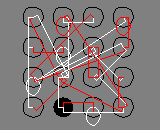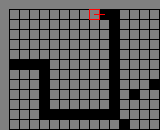|
Design Tooling - Evolutionary Computation |
||||
| |
||||
|
Information |
Evolution and Biology |
|||

- Evolution! |

- Homology |

- DNA structure |

- Chromosome |
|
|
Evolution and Computation |
||||
|
|
|

- Genetic Algorithms |

- Genetic Programming |
|
|
Evolution and Architecture |
||||
|
Interpretation |
The following examples demonstrate a range of simple and more complex examples based on GA's and related computational model to demonstrate the principles and challenges of this computational approach. They are by no means exhaustive and any search in the cited literature or additional source will turn up a large number of additional examples in many fields besides architecture, which only relatively recently applied the idea of GA's to design. |
|||
|
Implementation |
Most of the examples here are based on an array of 1's and 0's for the representation of the genome. The array is initiated by filling it with random values of one or zero at the beginning of each generation. Each individual is represented by one genome and the number of genomes represent the population. Usually the size of the population stays constant. Each individual in a generation is tested according to the set fitness criteria. Usually it is a weighted score derived from how well the individual performs a certain task or how close it fits a given goal. The genome is also referred to the genotype. The genotype is used as the instruction to produce the phenotype. The phenotype is the entity that is being tested for fitness. After each generation the genomes are ranked based on the performance of their phenotype and a percentage of the most successful is reinserted into the next random generation after being subjected to cross over and point mutation. This cycle continues for usually several thousands if not hundred thousands cycles in order to see if any trend in the successful genotypes emerges. |
|||
|
Examples |
Using Genetic Algorithms to Generate Developable Strips From Free formed Surfaces The environment for the GA model is the UV space of a NURBS surface. The UV space is the two dimensional representation of the three dimensional surface on a flat plane with width and length dimensions corresponding to the degrees of the surface. This gives the possibility to operate in a rectangular two dimensional environment which is easier to deal with and still maps perfectly onto the original three dimensional surface. One approach is to analyses the surface regarding curvature. After running the GA for a total of 1000 individuals for 200 generations using 1% probability of point mutation and 3 point crossover. A range of strips could be observed. The lower image shows the below the NURBS surface the environment is constructed from and in the upper part the strips mapped from UV space back onto the NURBS surface. |
|||

|

|

|

|
 |
|
Axel Kilian 2002 |
||||
|
Box Search Algorithm |
||||
 |
 |
 |
 |
|
|
Axel Kilian 2004 |
- The interpreter |
- the population |
- the top ten |
|
|
A Growth example |
||||
 |
 |
 |
 |
|
|
Axel Kilian 2004 |
- The interpreter |
- the population |
- the top ten |
|
|
Tower Optimization Algorithm |
||||
 |
 |
 |
 |
|
|
Axel Kilian 2004 |
- The interpreter |
- the population |
- the top ten |
|
|
Mesh Thickening |
||||
 |
 |
 |
 |
 |
|
Stylianos Dritsas 2004 |
||||
|
Minimum Volume Bounding Box |
||||
 |
 |
 |
 |
 |
|
Stylianos Dritsas 2004 |
||||
|
Evolution of "ants" using finite state
automata |
||||
|
Axel Kilian 2003 |
||||
 |
 |
 |
 |
|
|
- one possible 16 state FSA |
- Part of the ant environment |
- the generation statistics |
||
|
Bibliography |
Bentley, P. J. (1999), "Evolutionary
Design by Computers", San Francisco, California, Morgan Kaufman
Publishers. |
|||